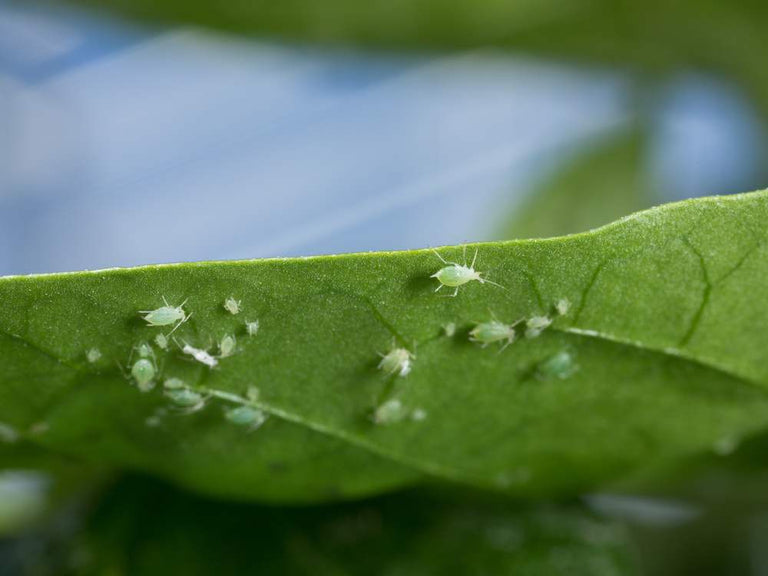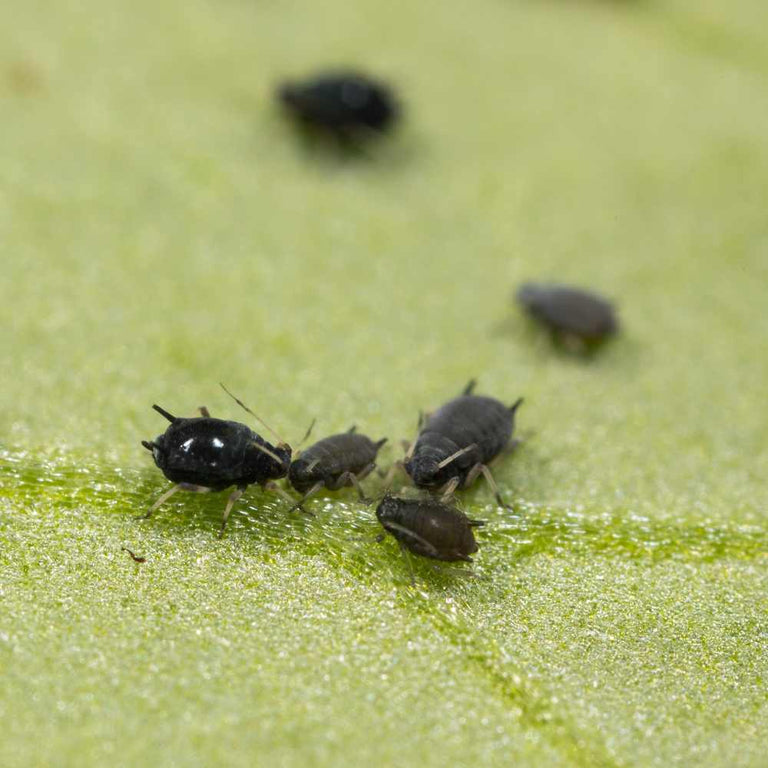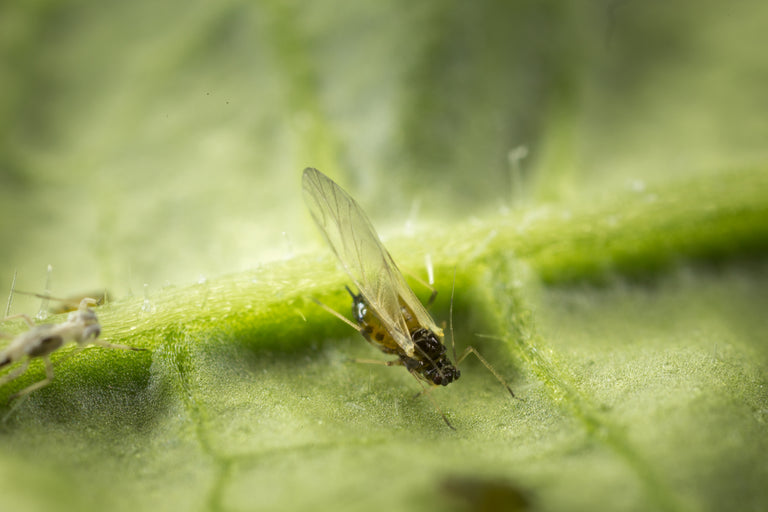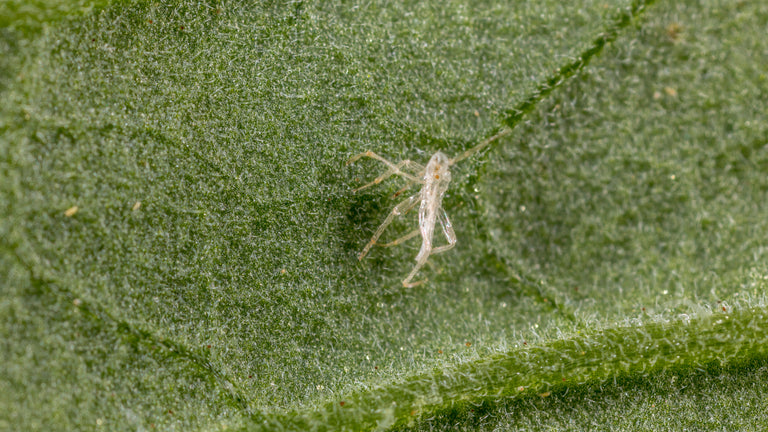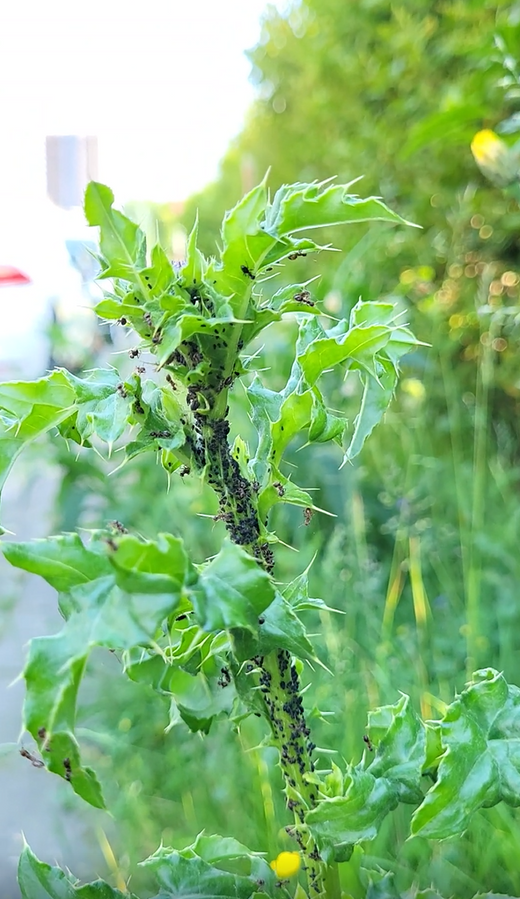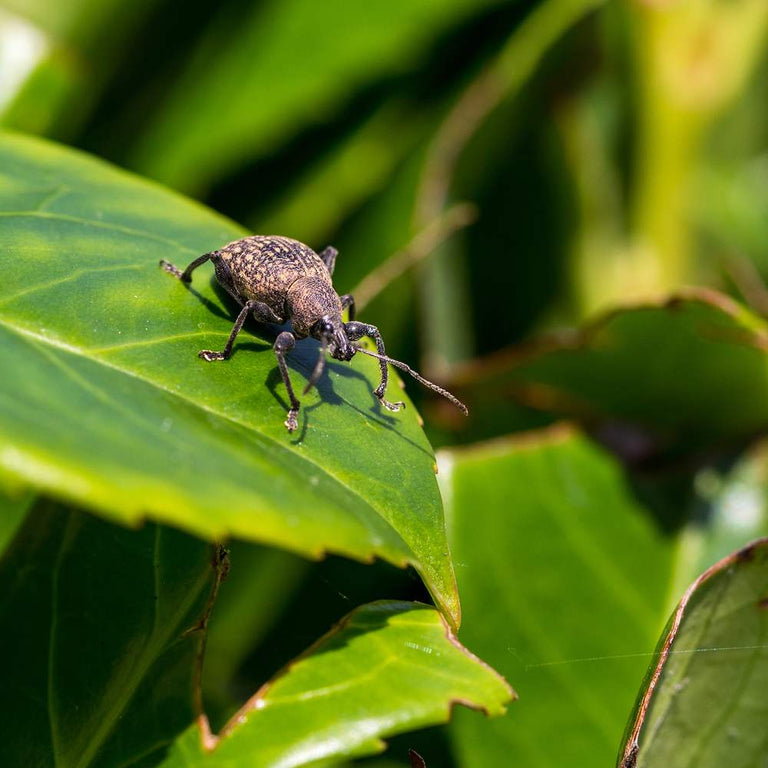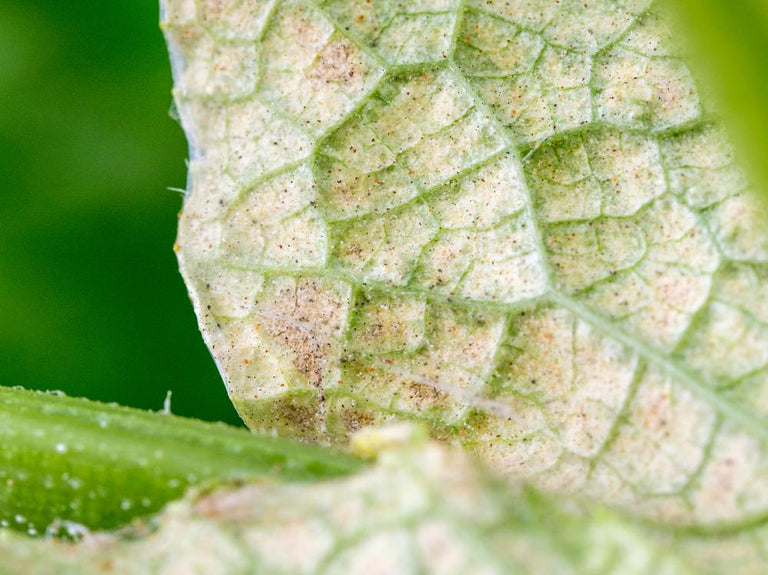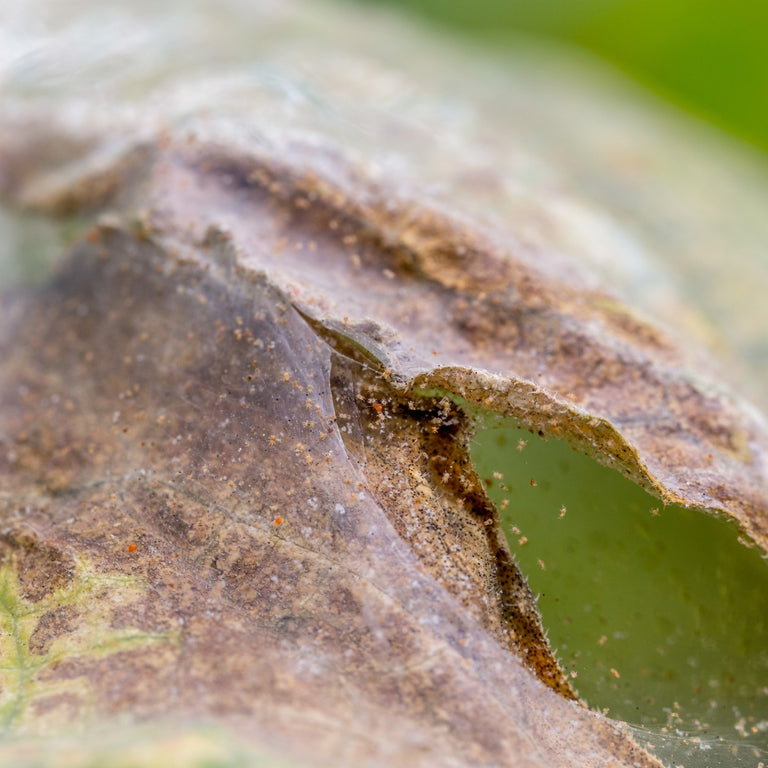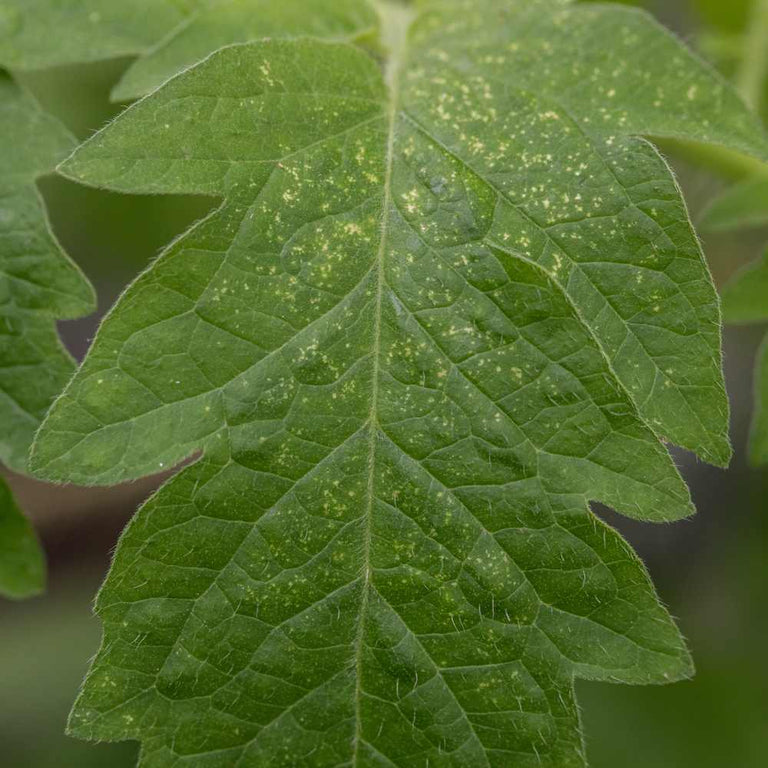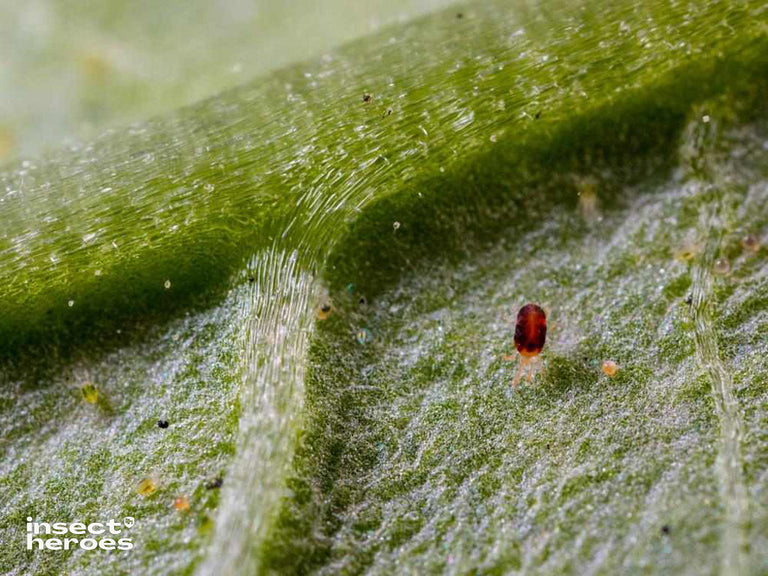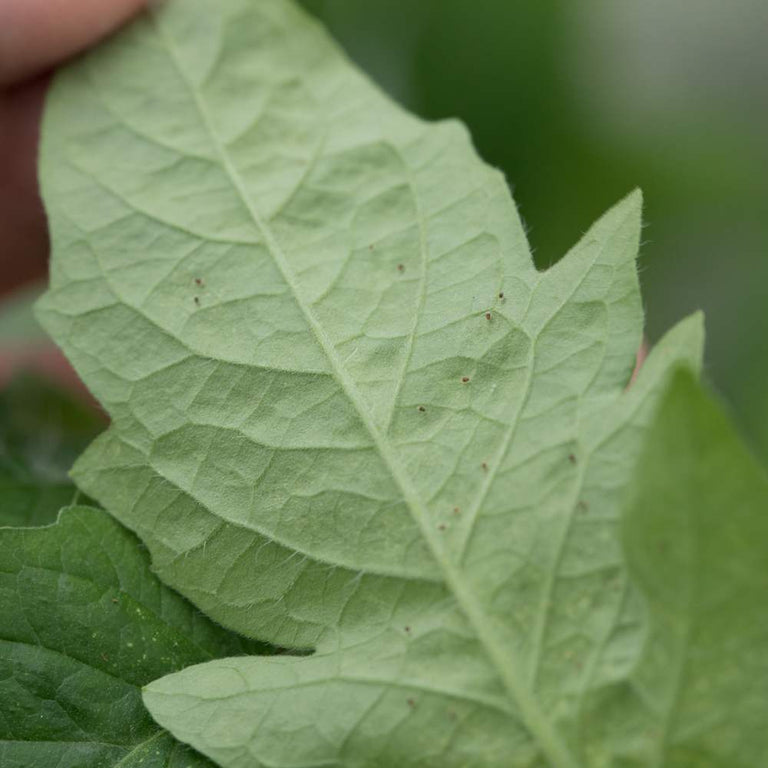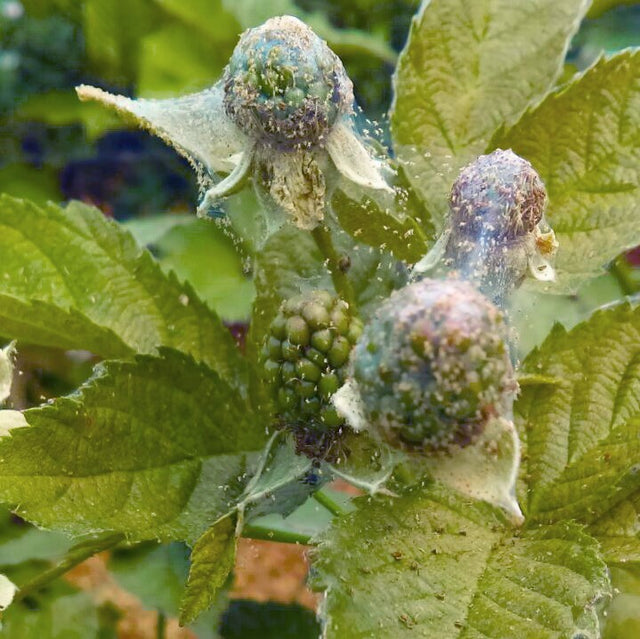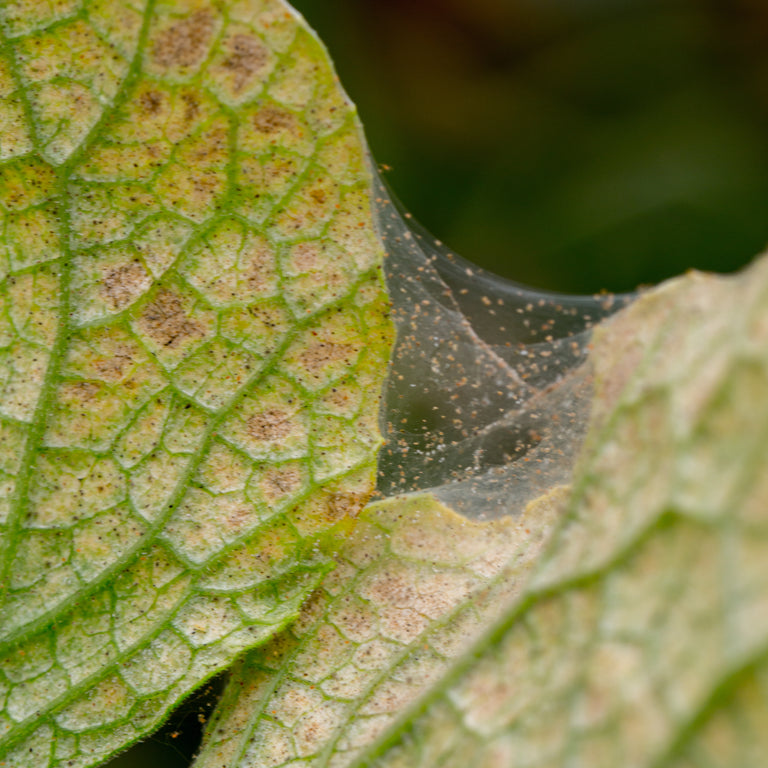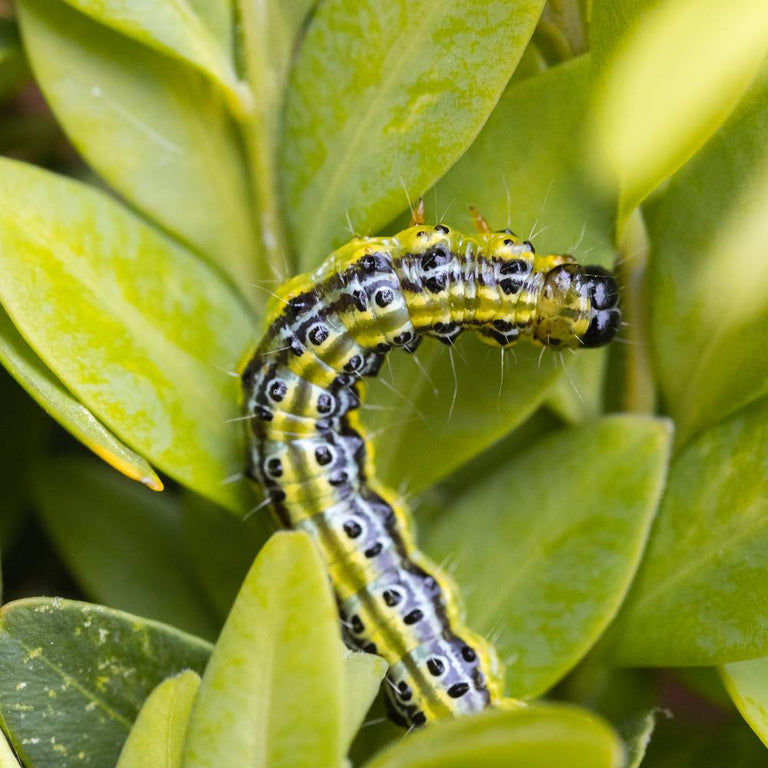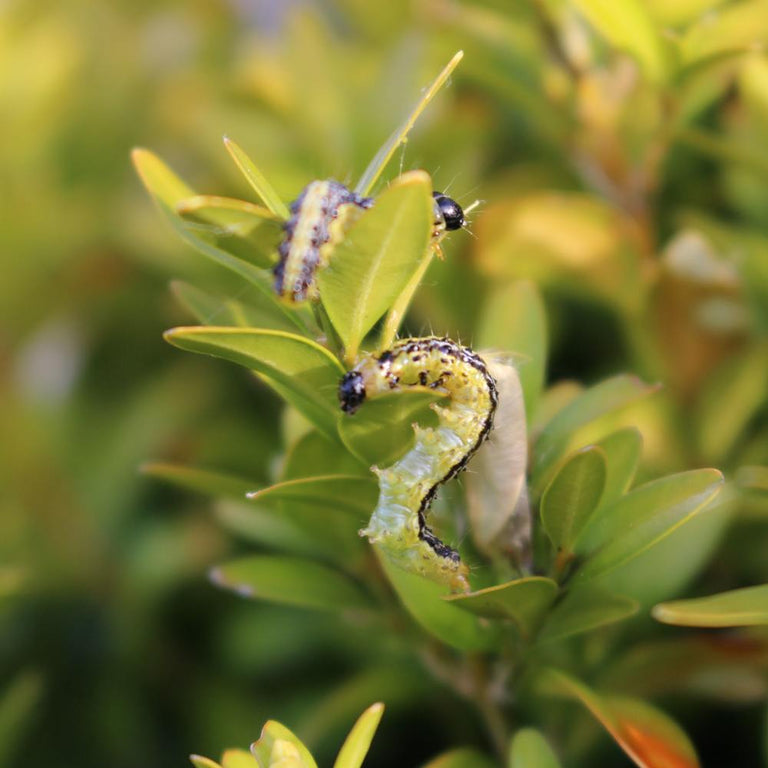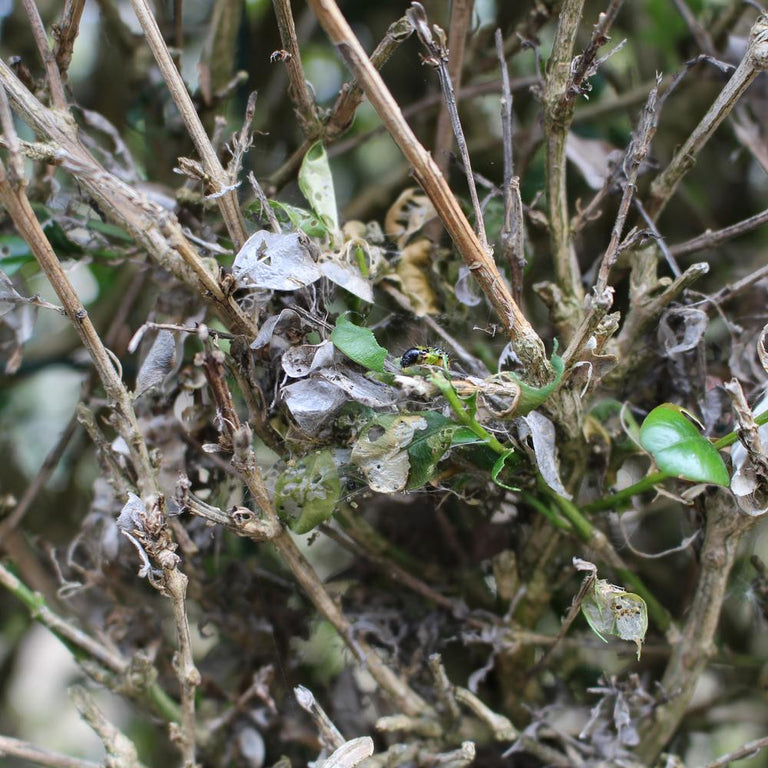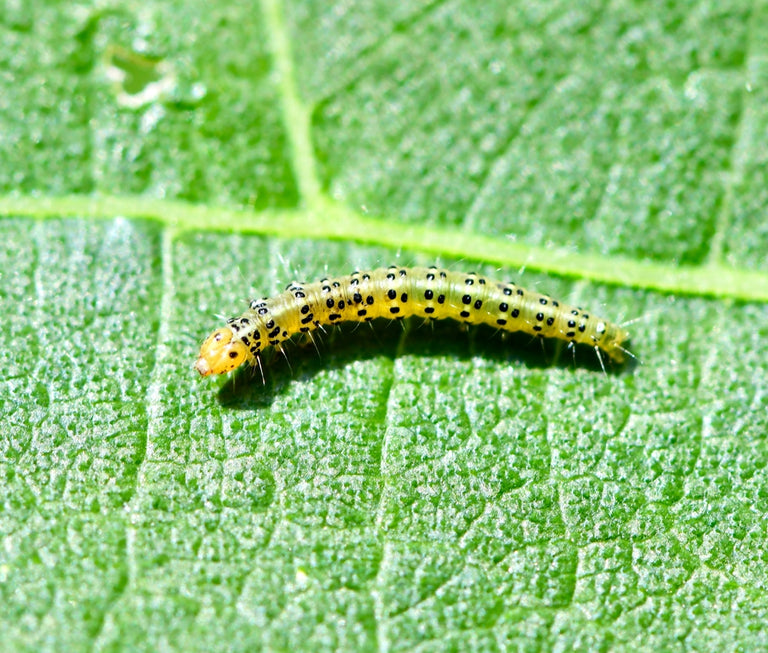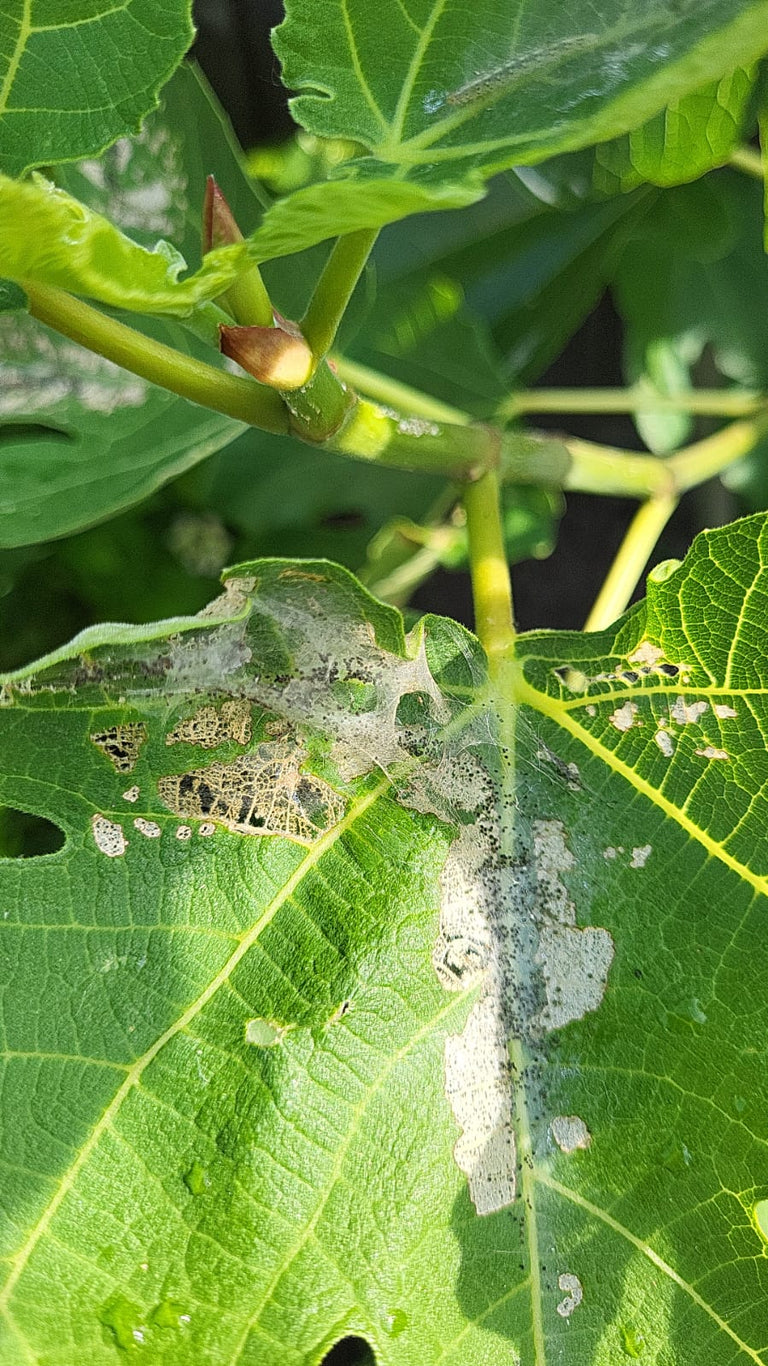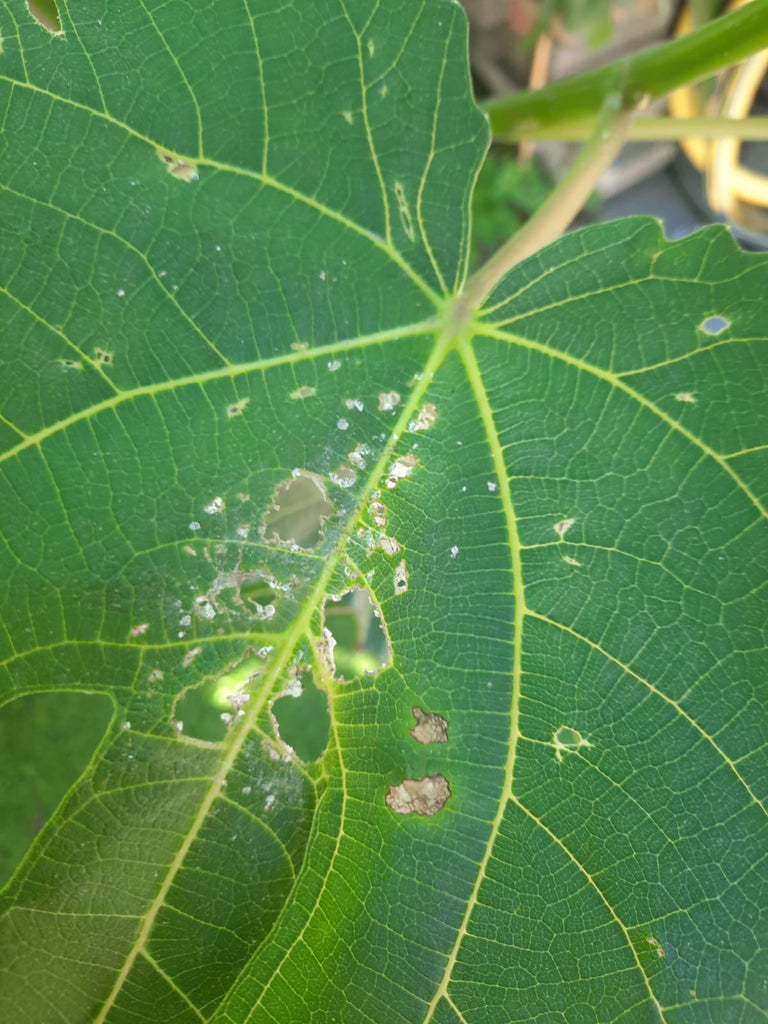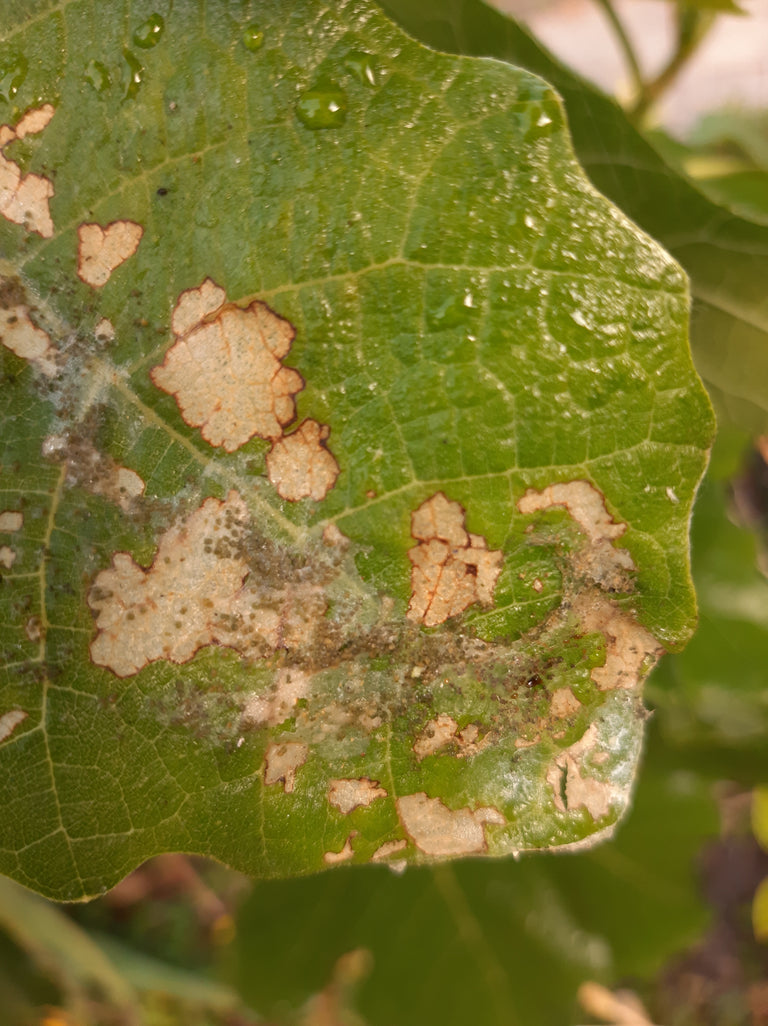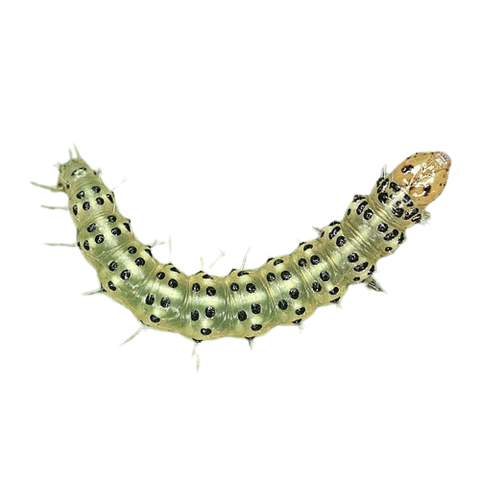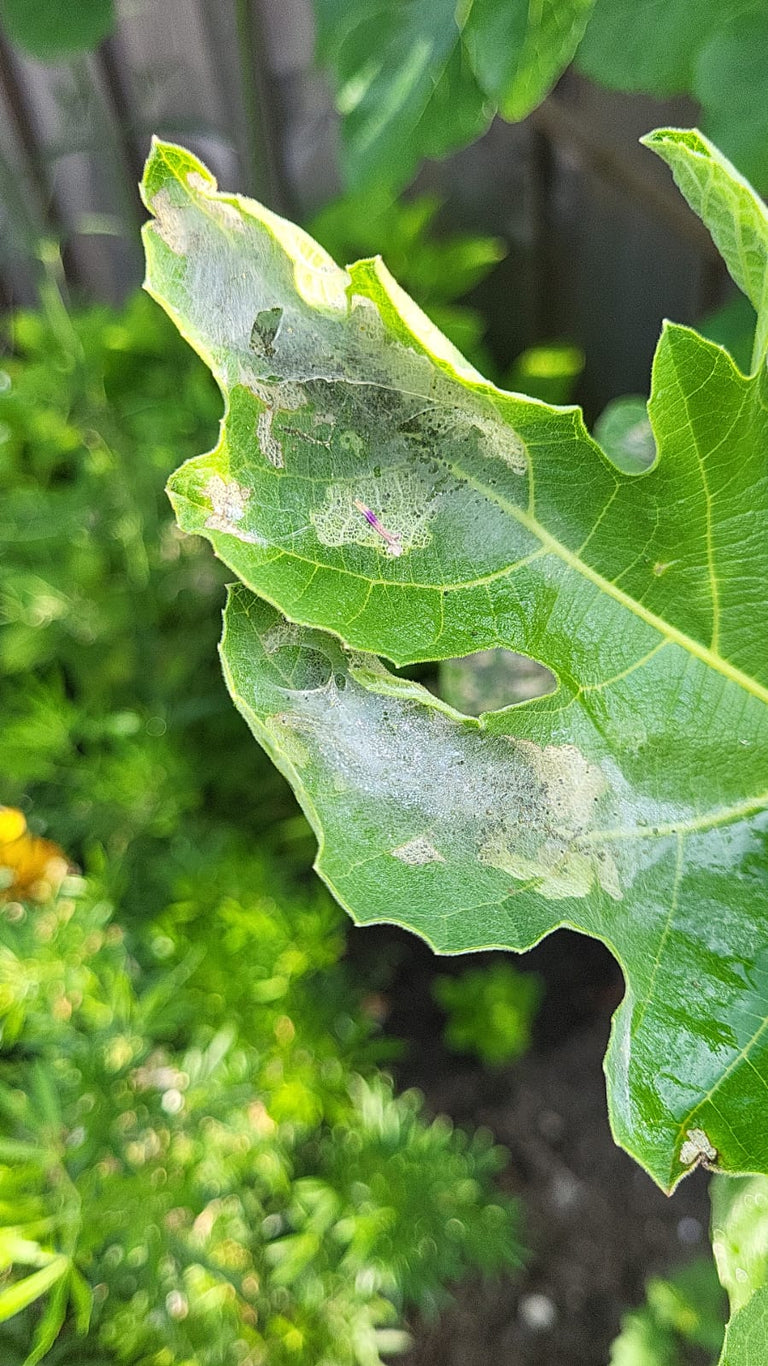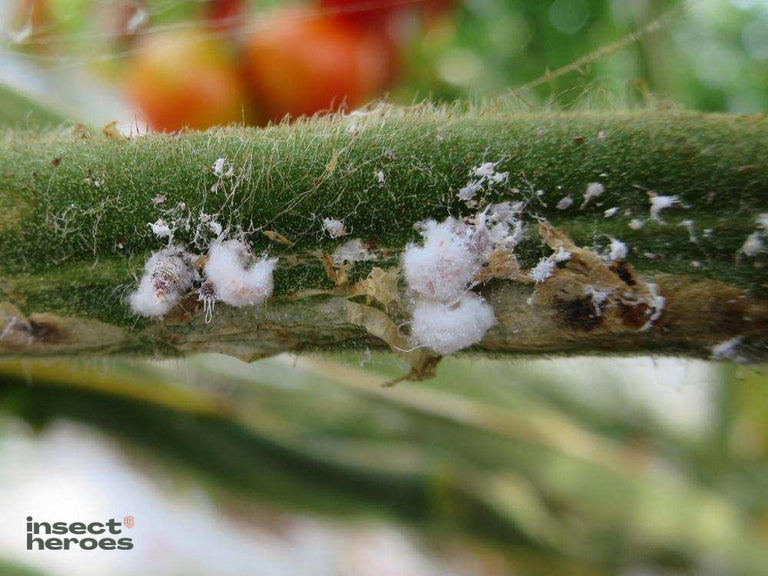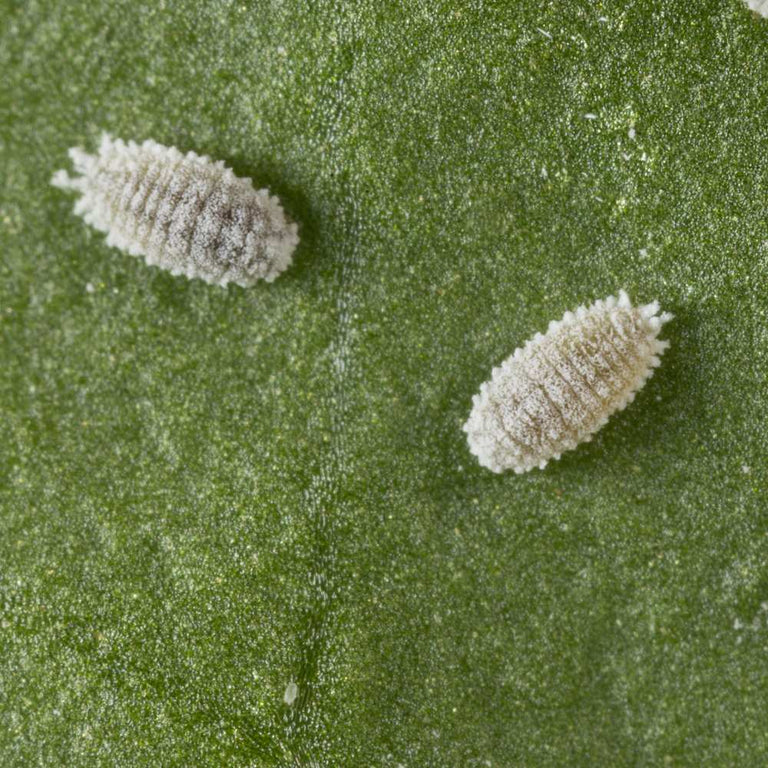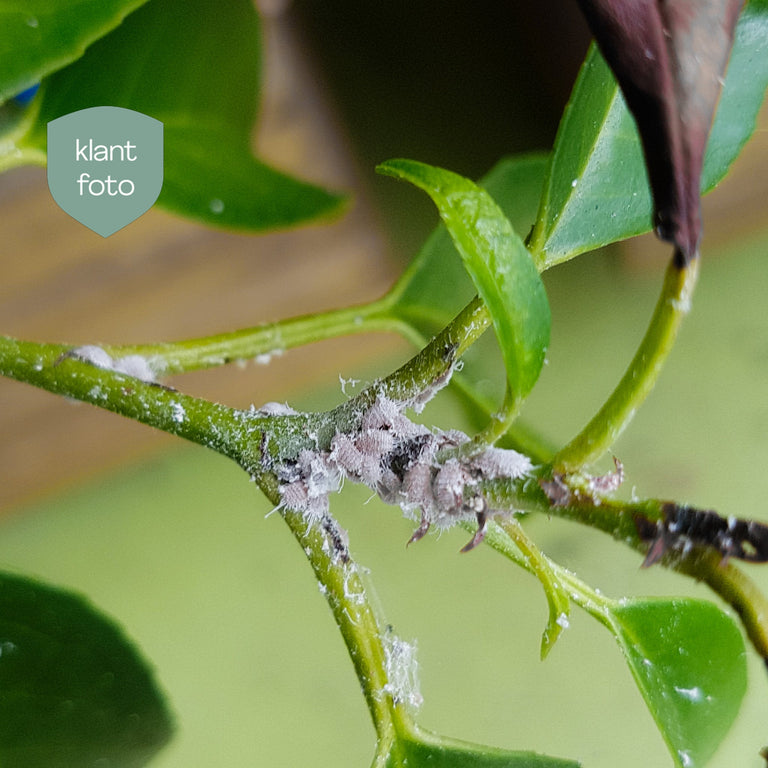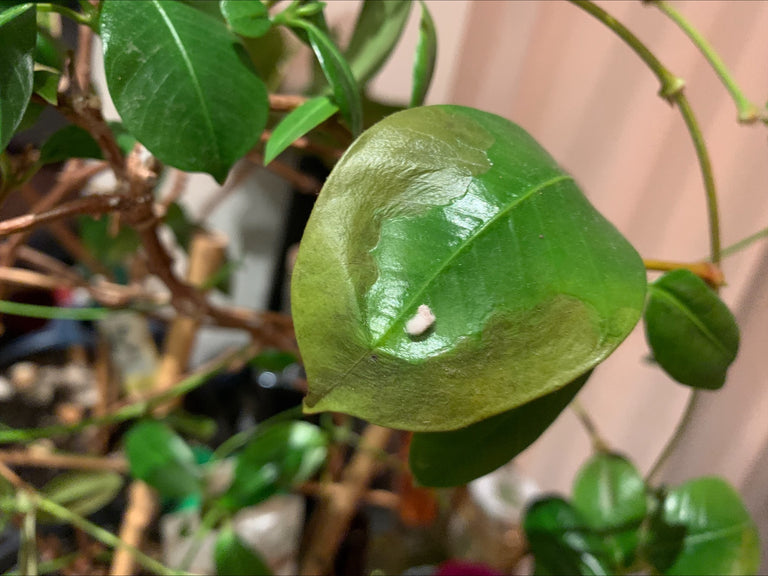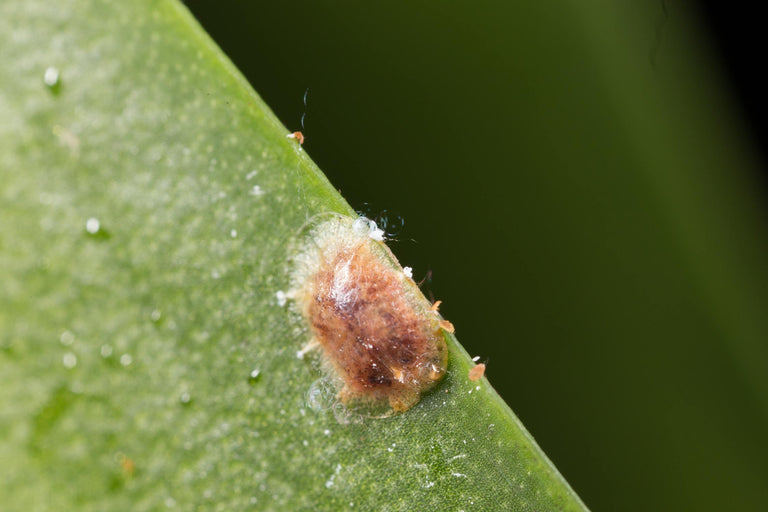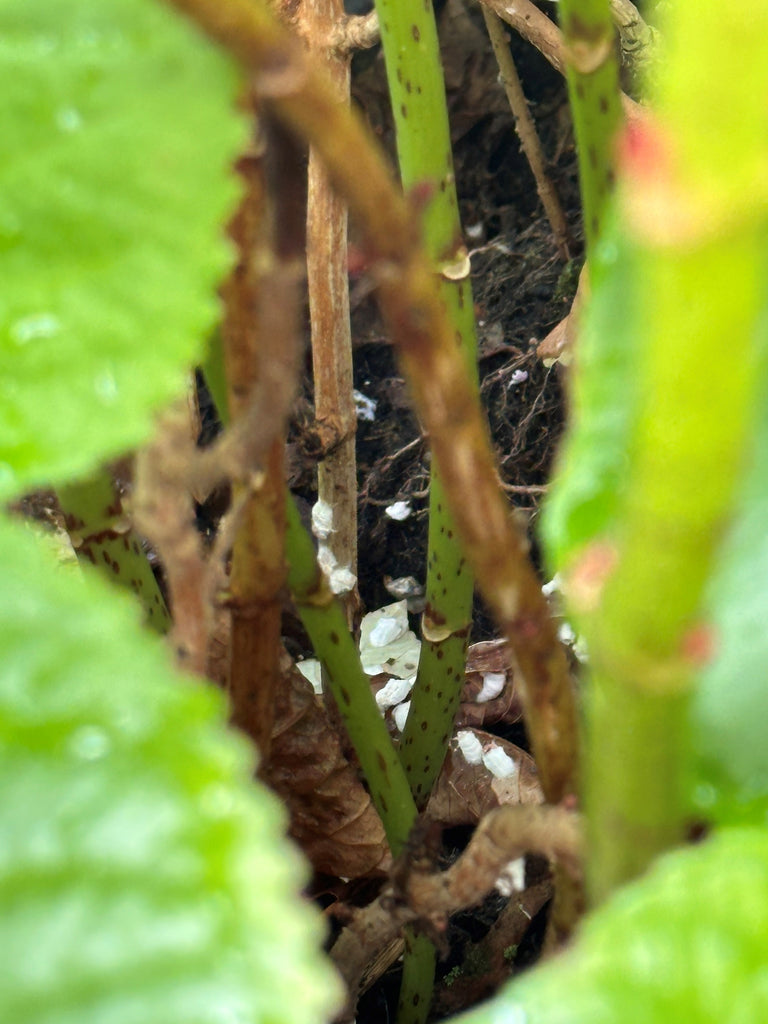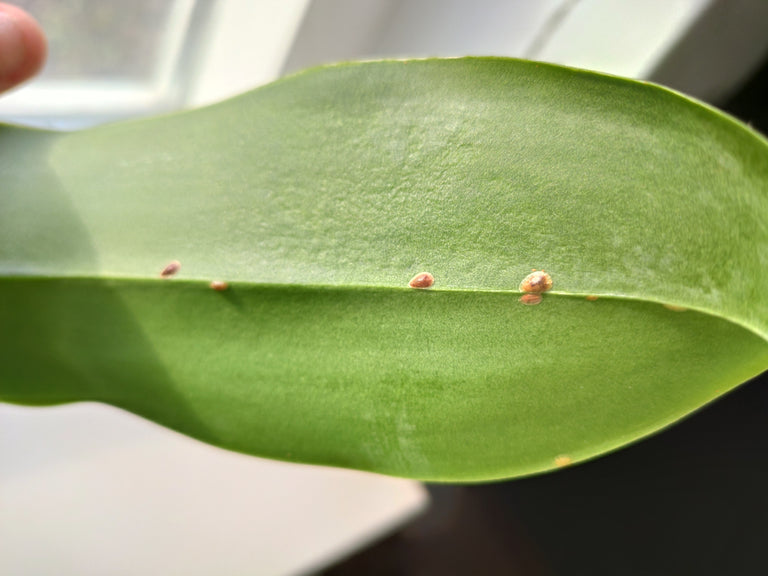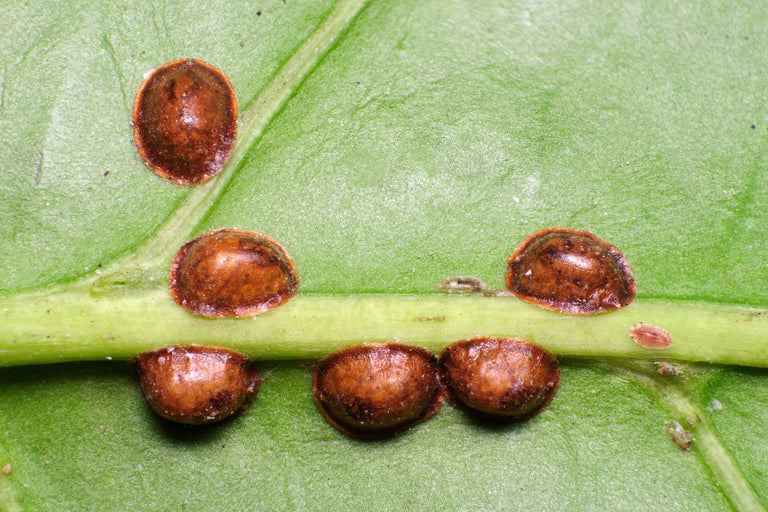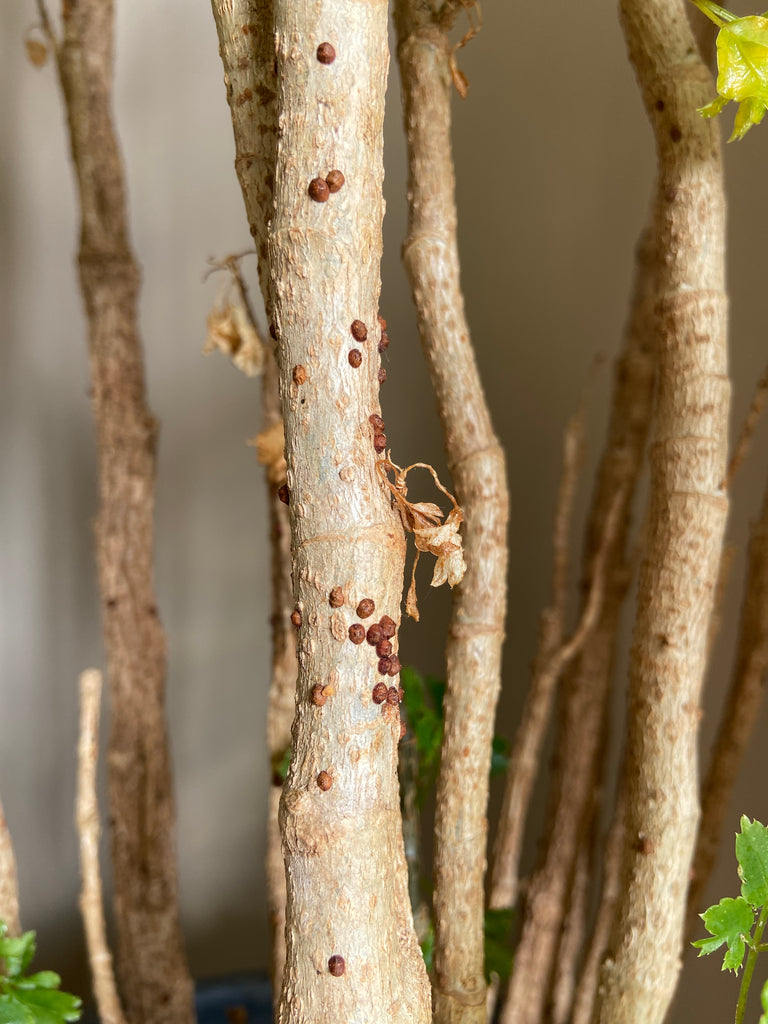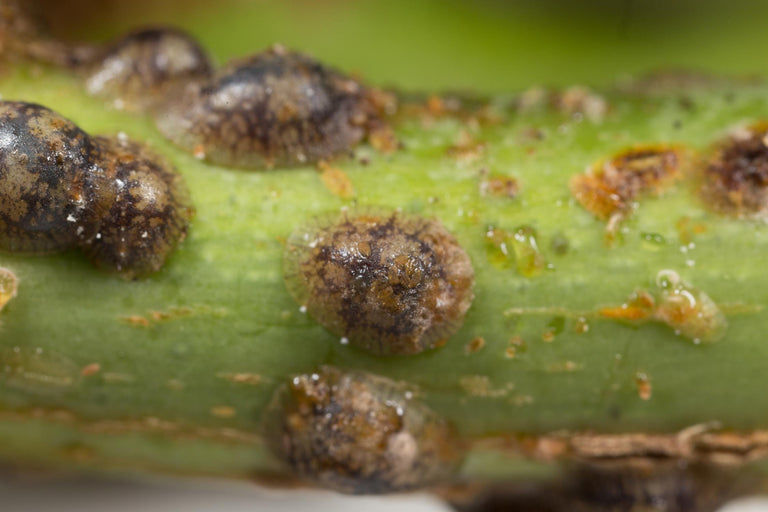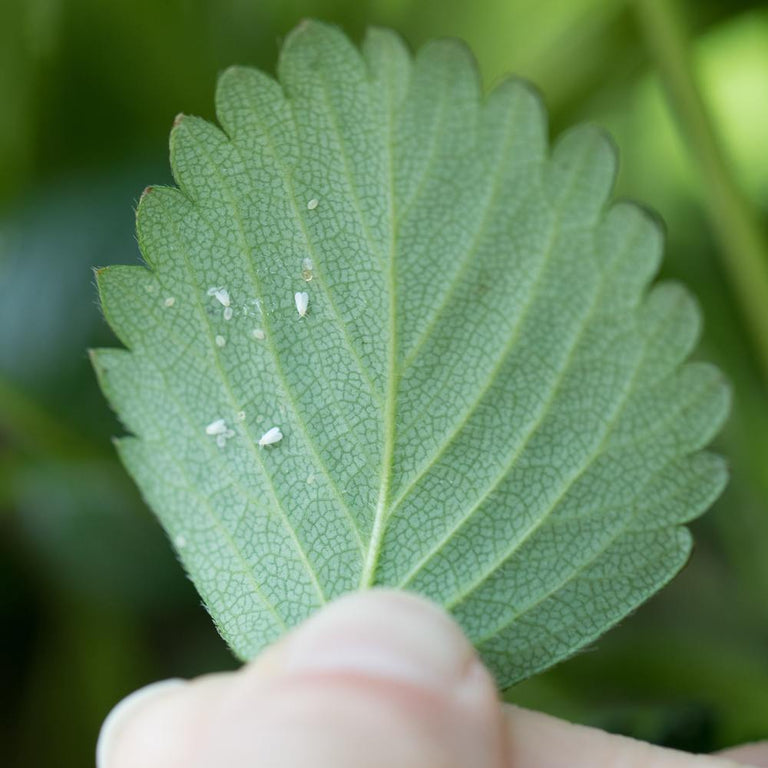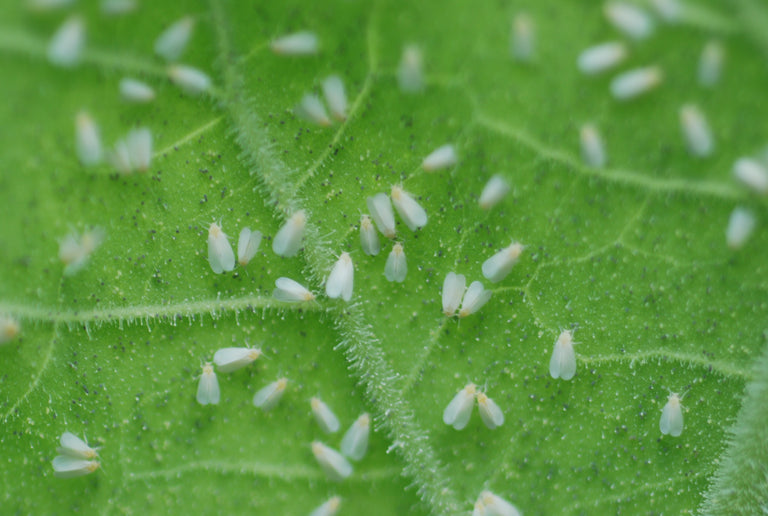Aphids are small, round insects in various colours (green, black, brown, red). They often sit in groups on the underside of leaves or stems and can grow wings to spread quickly. White molts and sticky leaves, which attract ants, are signs of aphids.
In general, snails eat dead plant material, which is very useful in the garden! The snails that cause the most damage in the garden are the slugs. Slugs prefer large, juicy leaves, such as those of hosta, lettuce, cabbage or pumpkin.
Do you see yellow or bare patches in the grass? Then you may be dealing with grubs, beetle larvae, that nibble on the roots of the grass. The larvae can be recognized by their milky white, worm-shaped body that curls up like the letter 'C'.
If you see round bites on the side of the leaves, you are probably dealing with yew weevils, also called vine weevils. These small, dark beetles of 7-10 mm hide during the day and feed at night on plants such as rhododendron, cyclamen, azalea and strawberry.
Spider mites are small, round creatures that look like spiders or ticks and are up to 0.5 mm in size. They can have different colours, such as brown, red and green. Spider mites cause yellow spots on the leaves of plants and make webs between the leaves.
Leatherjackets look like grey-brown, fat worms of 1 to 5 cm in size. There is no clear head to be distinguished. Damage by leatherjackets is caused by them eating the green parts of the grass. This causes bald spots in the grass.
To find box tree caterpillars you have to search carefully between the leaves of the box tree bushes. The young caterpillar is green in colour and therefore easily disappears between the green leaves. The animal is easily recognisable by its black head. When the caterpillar is a bit older the black longitudinal stripes on the body are more visible.
The fig skeleton moth likes to lay eggs on fig trees, after which the green caterpillars eat the leaves, leaving behind a 'skeleton'.
You can recognize mealybugs by the fluffy white spots near the veins of the leaves. Under the waxy threads are small white to light pink creatures of 4-5 mm in size. The leaves can feel sticky because of honeydew, a sugary substance that the mealybugs excrete.
Scale insects females have a shield that is fused to their body. Because they do not move, you can hardly see that you are dealing with an insect. Scale insects produce honeydew, which makes the leaves of plants sticky.
Whitefly is a small insect of about 3 mm in size with white, powdery wings. As soon as you shake the plant, the creatures fly up. The larvae of whitefly are transparent in color, and sit on the underside of the leaf.
Is your plague not listed?
Not sure which pest is bothering you? Upload a clear and sharp photo of the pest and we will see if we can find the pest and solution for you!










































